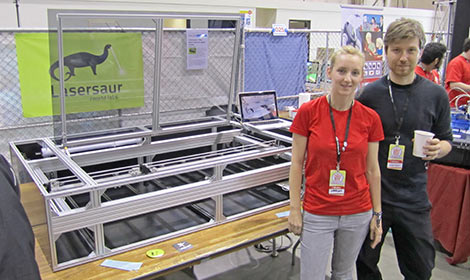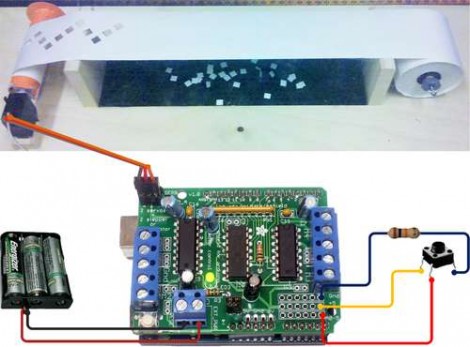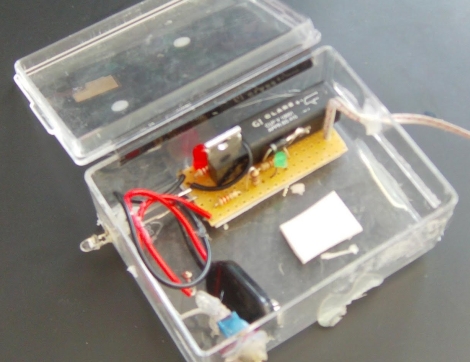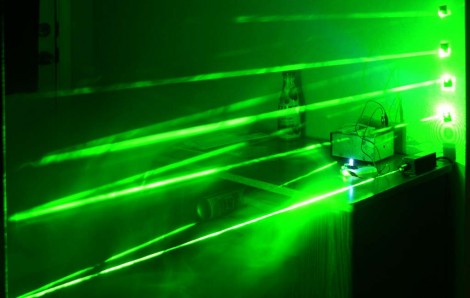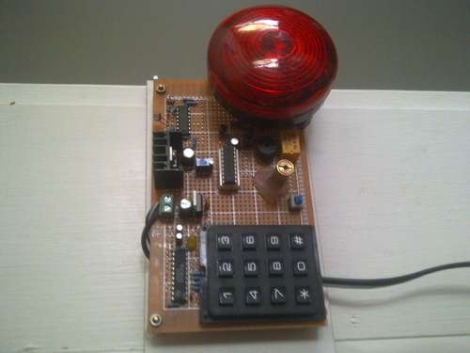[Shingo Hisakawa] sent in a tip for a for a neat little box called the Levistone that tracks the Internation Space Station with a laser. His video log goes though all the steps for this great little project.
[Shingo] originally planned to pull orbital data down from NORAD and send that to an ArduinoBT board with ethernet, GPS and compass modules. In the original plan, the Arduino would do the orbit calculations and point the laser using a few servos. There wasn’t much success with making an Arduino do all the work, so the an Android phone stood in for the GPS, compass and connection to the web. The duty of calculating the location of the ISS using GPS and orbital elements was moved onto the Amazon EC2 cloud. The final product looks great, even if it’s impossible to record the beam for the video.
With the ability to calculate the azimuth and elevation of the ISS from any point in the world, [Shingo] came up with SightSpaceStation, a neat mashup of his data and Google Maps. There are also iOS and Android apps for a nice piece of work in augmented reality. It’s a great project that would really compliment the ISS desk lamp we covered a few days ago.

